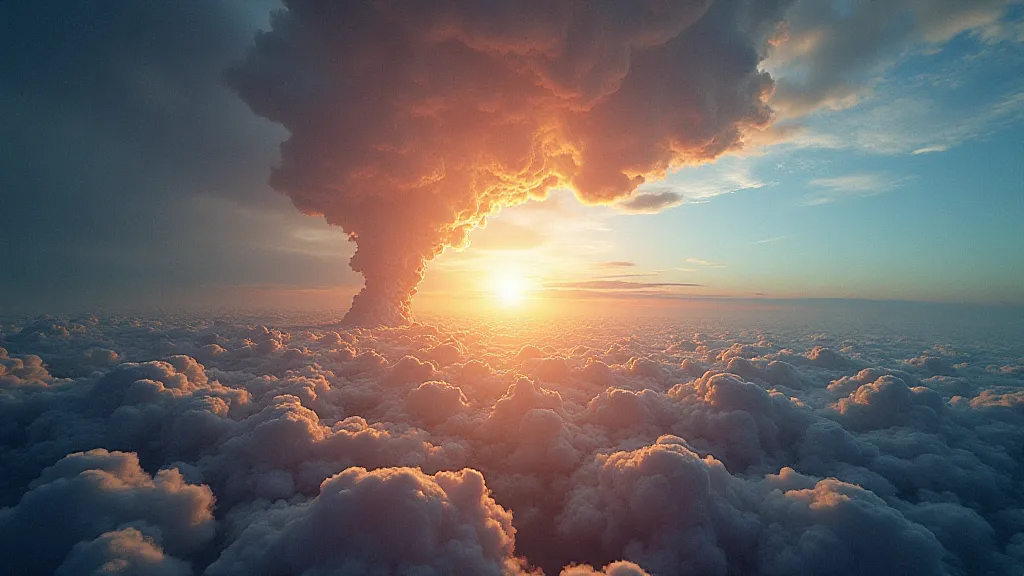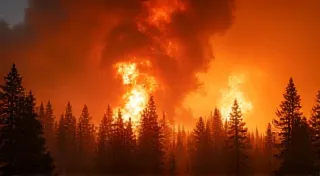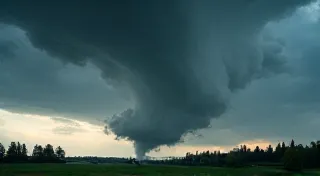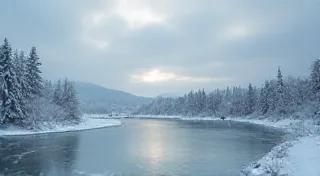The Effects of Volcanic Eruptions on Regional Climates: Historical Cases
Volcanic eruptions are dramatic events often associated with immediate devastation. However, their impact extends far beyond the immediate vicinity, often causing significant, and sometimes prolonged, disruptions to regional and even global climates. This article explores historical cases of volcanic eruptions and their influence on weather patterns, focusing on temperature changes, precipitation anomalies, and atmospheric effects. Understanding these complex interactions is crucial, especially when considering broader climate trends like those observed during periods such as the Little Ice Age.
The Science Behind the Impact
The primary way volcanic eruptions affect climate is through the release of aerosols into the stratosphere. These aerosols, primarily sulfur dioxide (SO₂) that converts into sulfate particles, reflect incoming solar radiation back into space, leading to a temporary cooling effect. The amount of aerosol released, the height of the eruption (reaching the stratosphere rather than being absorbed by the troposphere), and the latitude of the eruption all contribute to the magnitude and duration of the climatic impact. Beyond the direct cooling, volcanic eruptions can also influence precipitation patterns, impacting agricultural yields and contributing to societal upheaval. The disruption of these fundamental weather processes can have far-reaching consequences, impacting food security and triggering widespread social instability—parallels can be drawn to the agricultural hardships witnessed during periods such as the Dust Bowl, where environmental stresses intensified existing vulnerabilities. The sheer scale of agricultural devastation linked to such events highlights the delicate balance between climate and human well-being.

Historical Cases of Climatic Disruption
The 1815 Eruption of Mount Tambora (Indonesia) – The "Year Without a Summer"
Perhaps the most well-known example is the eruption of Mount Tambora in 1815. This colossal eruption injected massive amounts of sulfur dioxide into the stratosphere. The following year (1816) became known as the "Year Without a Summer." Northern Europe and North America experienced unusually cold temperatures, widespread crop failures, and famine. Snow fell in June in New England, and widespread frosts continued throughout the summer. The unusual weather patterns led to social unrest and migration. The dramatic and unexpected shifts in climate exposed vulnerabilities in agricultural practices and societal infrastructure, highlighting the crucial interplay between natural events and human livelihoods. These kinds of extreme environmental changes can impact societies in many ways, disrupting trade routes and triggering migration patterns, potentially reshaping demographics. Understanding the cascading effects—from disrupted harvests to societal upheaval—is vital for developing resilience strategies. The societal and economic ramifications underscored the fragility of systems heavily reliant on predictable weather patterns.
The 1883 Krakatoa Eruption (Indonesia)
The 1883 eruption of Krakatoa was another significant event with global climatic effects. While less powerful than Tambora, the eruption still injected substantial aerosols into the stratosphere. Global temperatures dropped slightly, and unusual weather patterns were observed worldwide. The atmospheric pressure waves generated by the eruption were also unprecedented, traveling around the globe multiple times. The resulting shifts in wind patterns affected rainfall and precipitation across many regions. The cascading effects of a volcanic eruption extend beyond temperature drops, significantly altering atmospheric circulation and ultimately influencing regional precipitation patterns. These changes can also impact the extent of historical sea ice, further disrupting local climates and ecosystems. Examining the global reach of Krakatoa’s atmospheric disturbances demonstrates how seemingly localized events can have widespread consequences.

The 1912 Novarupta Eruption (Alaska)
The Novarupta eruption in Alaska, 1912, was the largest volcanic eruption of the 20th century. While located at a high latitude, the resulting aerosol injection still affected global temperatures, although to a lesser extent than Tambora or Krakatoa. The eruption contributed to a slight cooling trend observed in the following years. The long-term effects on Alaskan ecosystems were also considerable, impacting local flora and fauna for decades. Studying events such as Novarupta provides insight into how high-latitude eruptions, though geographically constrained in immediate impact, can still contribute to global climate shifts. The eruption's effect on permafrost thaw, for instance, highlights the complex interactions between volcanic activity and Arctic environments. Understanding these effects is increasingly important given current concerns about Arctic amplification of climate change.
Long-Term Climate Effects & Ongoing Research
While the direct cooling effect from volcanic aerosols typically lasts for a few years, the long-term effects on climate are still being investigated. Changes in atmospheric circulation patterns, alterations in ocean currents, and interactions with other climate drivers can all be influenced by volcanic events. The interaction with other factors that historically contributed to periods of drought, such as those experienced during the Dust Bowl, needs further study. Modern climate models are increasingly incorporating volcanic forcing to improve our understanding of past and future climate scenarios. Further research continues to refine our knowledge of how volcanic eruptions interact with the Earth’s climate system. Consider the challenges of understanding these interactions—accurate modeling requires a thorough understanding of aerosol behavior, atmospheric dynamics, and the complex interplay between volcanic eruptions and other natural climate variability. These events also underscore the importance of comprehensive data collection and analysis to improve our predictive capabilities.

A Deeper Dive into the Mechanisms
Beyond the immediate aerosol effects, volcanoes can trigger a chain reaction within the climate system. Sulfate aerosols don't just reflect sunlight; they also provide surfaces for chemical reactions in the stratosphere, potentially impacting ozone depletion. Changes in stratospheric ozone influence atmospheric temperatures and circulation patterns, further complicating the picture. Furthermore, some volcanic eruptions release significant amounts of water vapor, a potent greenhouse gas, which can partially offset the cooling effect from aerosols. The interplay of these different factors makes it incredibly challenging to accurately predict the long-term impact of volcanic eruptions. Complex feedback loops, such as the influence of aerosols on cloud formation and precipitation patterns, further complicate the modeling process.
The Societal and Economic Consequences
The climatic disruptions caused by volcanic eruptions are not simply scientific curiosities; they have profound societal and economic consequences. Crop failures lead to famine and malnutrition, social unrest and political instability. Mass migrations are often triggered by uninhabitable conditions, leading to displacement and conflict. The "Year Without a Summer," for example, was a direct catalyst for social upheaval and migration in Europe and North America. Economic losses are substantial, impacting agriculture, fishing, and trade. Rebuilding infrastructure and communities after a major volcanic eruption is a long and costly process. Examining the historical record allows us to better prepare for and mitigate the potential impacts of future eruptions. The compounding effects—agricultural losses leading to societal unrest—demand a holistic approach to disaster preparedness.
Volcanic Eruptions and Future Climate Change
As we grapple with human-induced climate change, understanding the potential for volcanic eruptions to either exacerbate or temporarily mask the effects of greenhouse gas emissions becomes increasingly important. While volcanic eruptions can provide a short-term cooling effect, this is often followed by a return to the underlying warming trend. The interaction between volcanic forcing and human-caused climate change is a complex and actively researched topic. For instance, a significant eruption could temporarily reduce the rate of warming, but this would not negate the long-term impacts of increased greenhouse gas concentrations. Climate models are constantly being refined to better represent these interactions and improve our ability to predict future climate scenarios. Accurate modeling relies on a detailed understanding of both the natural factors, such as volcanic activity, and the anthropogenic drivers of climate change.
Conclusion
Historical volcanic eruptions have played a significant role in shaping regional and global climates. Studying these past events provides valuable insights into the complexity of the Earth’s climate system and helps us better understand the potential impacts of future volcanic activity. By analyzing historical weather patterns and combining this data with volcanic eruption records, we can continue to refine our climate models and improve our ability to predict and mitigate the impacts of both natural and human-induced climate change. The lessons learned from events like the eruption of Mount Tambora, the Krakatoa eruption, and the Novarupta eruption, remain relevant today, underscoring the importance of continued research and a holistic approach to understanding and addressing the challenges of a changing climate. Further investigation into the interplay between large-scale climate patterns and volcanic events is crucial for accurately projecting future climate scenarios and informing effective adaptation strategies.





